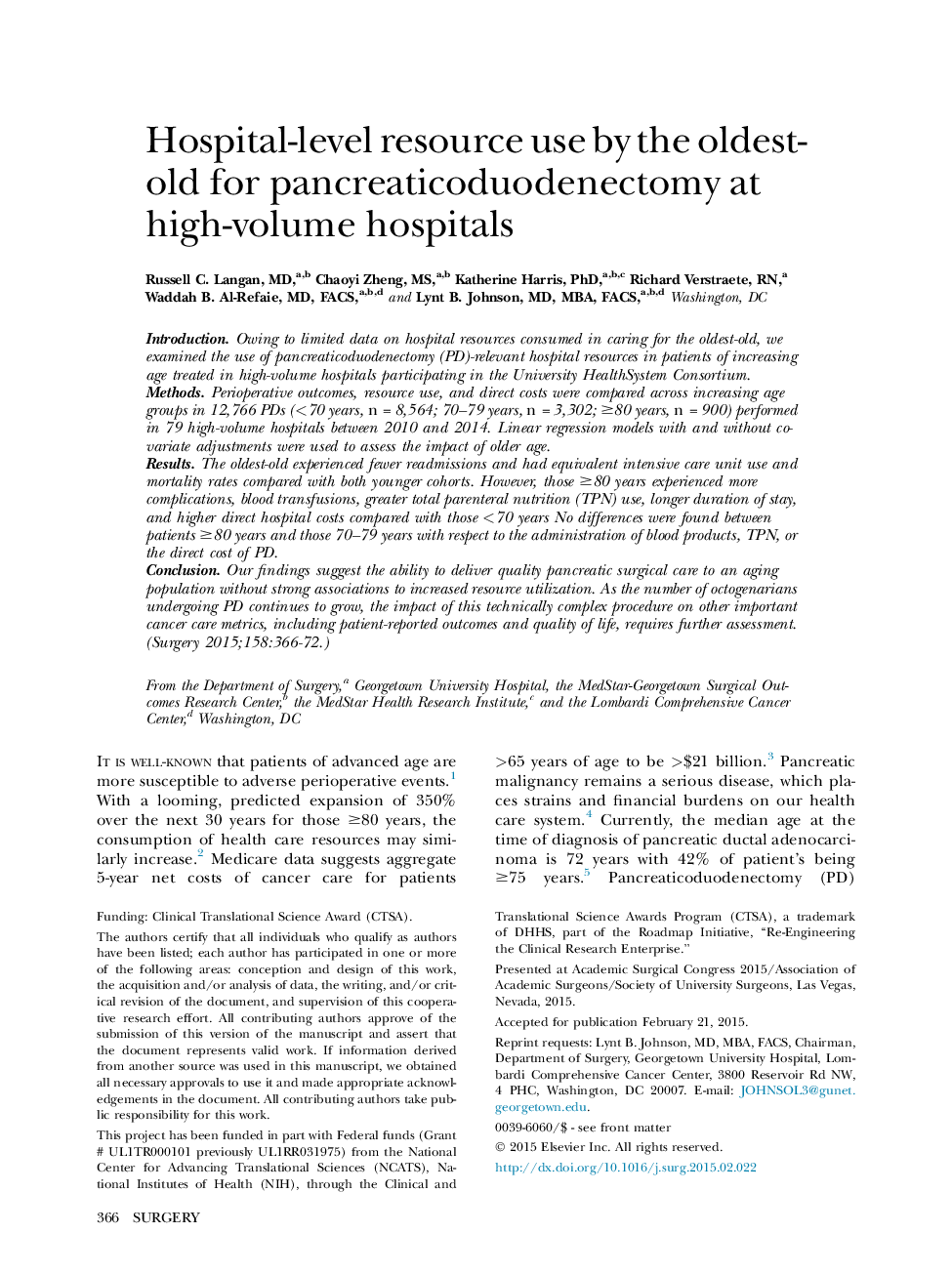| Article ID | Journal | Published Year | Pages | File Type |
|---|---|---|---|---|
| 4307003 | Surgery | 2015 | 7 Pages |
IntroductionOwing to limited data on hospital resources consumed in caring for the oldest-old, we examined the use of pancreaticoduodenectomy (PD)-relevant hospital resources in patients of increasing age treated in high-volume hospitals participating in the University HealthSystem Consortium.MethodsPerioperative outcomes, resource use, and direct costs were compared across increasing age groups in 12,766 PDs (<70 years, n = 8,564; 70–79 years, n = 3,302; ≥80 years, n = 900) performed in 79 high-volume hospitals between 2010 and 2014. Linear regression models with and without covariate adjustments were used to assess the impact of older age.ResultsThe oldest-old experienced fewer readmissions and had equivalent intensive care unit use and mortality rates compared with both younger cohorts. However, those ≥80 years experienced more complications, blood transfusions, greater total parenteral nutrition (TPN) use, longer duration of stay, and higher direct hospital costs compared with those <70 years No differences were found between patients ≥80 years and those 70–79 years with respect to the administration of blood products, TPN, or the direct cost of PD.ConclusionOur findings suggest the ability to deliver quality pancreatic surgical care to an aging population without strong associations to increased resource utilization. As the number of octogenarians undergoing PD continues to grow, the impact of this technically complex procedure on other important cancer care metrics, including patient-reported outcomes and quality of life, requires further assessment.
